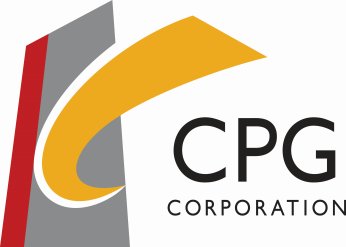A Conversation with Project Managers from PM Link

Conversation With… is a series of articles featuring personalities within CPG Corporation and its diverse partners who inspire.
In this edition of 'A Conversation with...,' we engage with Project Managers, a core group of professionals who play a vital role in contributing to the successful delivery of building projects.
Ong Zhen Yu and Kueh Yi Shi, both from PM Link (CPG Corporation’s Project Management subsidiary), share insights into how they work to ensure their stakeholders' objectives are met in this fast-paced environment, as well as their aspirations for working in the industry.
How is a Project Manager significant in a Building Project cycle?
ZHEN YU:
When we admire a building and marvel at its striking architecture or engineering, we often overlook the roles of other contributors who help drive the successful development of a building project. Project management is a critical part of a building project cycle. Project management ensures that a building project runs smoothly and delivers all project objectives on time, and the scope of a PM encompasses various aspects of the building development process.
There is often a misconception that a Project Manager (PM) solely exists to delegate tasks within a building project. In reality, PMs play a critical role and must possess a firm grasp of the project to ensure efficient task prioritisation and time allocation. Other responsibilities include meticulous monitoring of project progress to track various task statuses, as well as overseeing the delivery of materials and tracking manpower. We are intricately involved in the entire process, ensuring that tasks on the critical path are completed in a timely manner, thereby preventing any disruptions to subsequent works.
As such, effective communication, leadership, and problem-solving skills are essential for this role. The position also demands spontaneity and innovation, as we sometimes encounter situations where we have to implement solutions to unforeseen challenges.
YI SHI:
The scope of project management is unique as it encompasses non-technical aspects of a building project, in contrast to the specialised technical expertise required of an engineer, for example. A PM must drive the project forward to ensure steady progression. However, to achieve this, a PM must be adept at perspective-taking while maintaining objectivity. In any situation, I consistently strive to put myself in the shoes of various stakeholders, understanding their perspectives. To run the project effectively, it is crucial to remain objective and analyse factors that contribute to well-informed decisions. These skill sets are dynamic and necessitate continuous improvement and learning through on-the-job experiences.
Adopting an Agile mindset for Success
ZHEN YU:
In the current environment, new situations arising from either global changes or immediate circumstances mean that as PMs, we need to be flexible and adaptable. The situation may have changed, but a client’s objective often remains constant. So, how can we, as PMs, continue to deliver value while learning to coordinate and collaborate with our stakeholders? The answer would be to adopt an agile mindset. That would mean to understand the client, the client’s requirements and staying flexible during unexpected situations, so that we can still collaborate to achieve our final goal.
One of the projects I worked on is the Nursing Home at West Coast Link. That project was particularly meaningful as I encountered unique challenges and had to think outside the box to solve them. One significant challenge my team faced was space constraints. Due to limited space for material storage, access, and work, we engaged in multiple discussions to plan sequencing and prioritise tasks, coordinating the delivery of materials. Eventually, we were able to stagger the delivery of materials and ensure that the nursing home was completed on time.
YI SHI:
I work primarily on projects with high-security requirements, so, while I cannot disclose specific project details, I can say that each project comes with its own set of unique conditions. As PMs, we must manage various stakeholders and meet diverse expectations for each project. We should be able to discuss and understand various requirements from our stakeholders, as well as the reasons behind these requirements. The best solutions often arise from mutual understanding and thorough discussions. Given that everyone has unique personalities and objectives, it is essential for us to remain aligned as we work toward project completion.
Certain modifications will unavoidably clash with established practices, but it is precisely this type of evolution that is vital for ensuring we remain adaptable, nimble, and capable of delivering services that help our stakeholders achieve their objectives and collectively reach project goals.
Maintaining the Relevance of Project Management
YI SHI:
One of the key success metrics in project management is cycle time. Cycle time, in the context of project management, refers to the total time it takes to complete a specific task, activity, or process within a project. It is a metric that measures the duration from the beginning to the end of a particular cycle or workflow. The concept of cycle time is often utilised to assess and improve the efficiency of processes and identify areas for optimisation. I believe one of the key drivers for PMs to stay relevant is the adoption of technology. Technology plays a crucial role in reducing cycle time and improving efficiency in project management.
ZHEN YU:
To expand on what Yi Shi said, technological tools such as project management software can help optimise processes in the construction and building value chain. PM Link recently signed an MoU with our business partner, Airsquire, to co-develop and implement Digital Construction Monitoring technology to improve operational efficiency. For example, by utilising technological tools such as unmanned aerial vehicles or drones for inspection, we can complete virtual site walks for high-rise buildings in a span of minutes. Project management software like this can automate tasks, streamline workflows, and facilitate real-time collaboration. Communication platforms, document management systems, and automation tools contribute to quicker decision-making and data access. When we use mobile applications that enable us on-the-go access, we effectively utilise time and can achieve optimal resource allocation. On top of that, technological tools also support continuous improvement and effective project control. Through digitalisation, we can really explore more possibilities.
YI SHI:
Speaking of possibilities, I am also excited about the advancements in construction technology, particularly in the field of 3D printing. Currently in Singapore, there are research projects exploring the potential adoption of 3D concrete printing. Such technologies have the potential to significantly enhance construction productivity, sustainability, reduce labour requirements, and improve safety. I hope that one day, the use of 3D printing in construction can be fully realised in Singapore, especially in our high-rise buildings.
 |
Zhen Yu joined PM Link upon graduation because he enjoyed his project management experience during an internship with the company. He appreciates the dynamic working environment and looks forward to the daily adventures that the life of a Project Manager brings.
|
 | Prior to being a Project Manager, Yi Shi was a Civil & Structural Design engineer. Hoping to sharpen her skills in a non-technical area of the built environment industry, she decided to explore project management. Yi Shi enjoys interacting with multidisciplinary experts in her daily work and is always eager to learn from the different perspectives of other experts. |
By CPG Editorial Team



